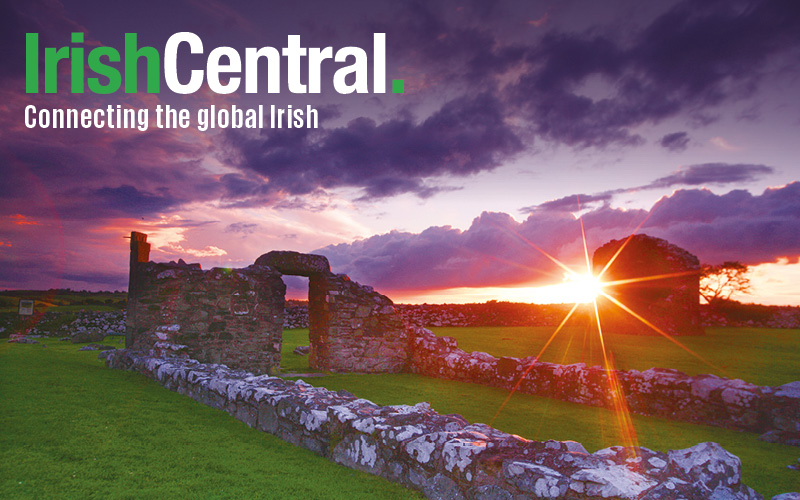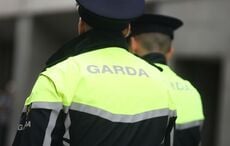As a government inquest into the atrocities committed at Ireland's mother and baby home progresses, here is the background on the nine main homes.
In 2014, the horror of Ireland's mother and baby homes came to light as historian and researcher Catherine Corless discovered a suspected mass grave on the grounds of the Tuam Mother and Baby Home.
Read More: Tuam Babies, Ireland’s darkest secret, will be the biggest Irish story in 2019
Now, survivors, family members, and advocates have banned together not only demanding answers but also justice for those who died while in Ireland's mother and baby homes. A government-led inquiry has a deadline set for 2020.
Below, some information regarding the nine Irish mother and baby homes that operated throughout the 20th century.
Totals
- 35,000 - approximate number of women who went through Ireland's nine mother and baby homes between 1904 and 1996.
- 6,000 - the estimated number of babies and children who died across the nine Irish homes
Pelletstown / Saint Patrick’s - Co Dublin
Originally a public workhouse, it was converted for use as a “special institution” exclusively for single mothers in 1906. It was owned and financed by the Poor Law Guardians and the Dublin Union and run by the Sisters of the Daughters of Saint Vincent de Paul (later called the Daughters of Charity) on their behalf.
Read More: My shocking visit to Irish Mother and Baby home in 1968
Between 9,000 and 12,000 women passed through St. Patrick's, which is considered by far the largest of Ireland's mother and baby homes. Babies and children who passed away were sent for burial in Glasnevin Cemetery in north Dublin to either the children’s “Angel’s Plot," or, in the early years, to the pauper graves.
Between 1923 and 1930 inclusive, 662 children died at this home, an average of over 97 per year, or nearly two per week for seven years. However, these figures only began to be recorded 20 years into the home's operation; conditions prior were even worse.
There was not a significant drop in infant mortality rates in the homes until the second World War ended, in 1945.
Local government reports also confirmed the fact that, between 1940 and 1965, Saint Patrick’s and its sister hospital Saint Kevin’s “donated” the bodies of at least 461 deceased babies for routine dissection practice in all the major, medical teaching institutions in the state, including Trinity College Dublin, The College of Surgeons and University College Dublin medical school.
Saint Patrick’s relocated and downsized in 1985 to a period house on Eglinton Road, in Dublin 4, and operated ‘supervised flatlets’ in its new premises.

St. Patrick's mother and baby home, Dublin.
Read More: Shocking new figures now highlight child deaths at Dublin home for unmarried mothers
The Bethany Home - Rathgar, Co Dublin
The Bethany Home opened 1921 in Blackhall Place, in Dublin’s city center and moved to Rathgar 1934. Bethany was the sole mother and baby home for Protestant women who found themselves single and pregnant. It was the only such semi-secure institution for Protestants and it also doubled up as an orphanage, center for Protestant women and girls on remand from the courts, on probation, etc.
At least 227 babies died between 1921 and 1949 and it is likely the final figure will be approximately 300 or more.
The names of the 227 babies and children who died are listed on a Memorial in Mount Jerome cemetery in Dublin erected through the relentless work of the first person to campaign over the issue of Mother and baby homes, Derek Leinster.
The Bethany Home closed in 1972.
The Bethany Home.
Read More: 58 children in Dublin pauper’s grave died of malnutrition, syphilis, and heart failure
Kilrush Mother and Baby Home - Kilrush, Co Clare
Mother and baby home seems to have been in existence at the foundation of the state in 1922. Originally a county workhouse, Kilrush was designated a ‘Special Institution’ for the sole use of single mothers in 1922 and run for the local authorities on their behalf by the Sisters of Mercy who also ran many of the country’s Industrial schools for girls.
Little is known about this home except for an article in the Clare People, written by Joe O’Muircheartaigh, and some minor mentions in the local government reports.
There seems to be confusion as to where the babies who died are buried with most adoption activists believing there is an Angel’s Plot [a child’s graveyard] near the former home. Approximately 800 women and girls entered the home and approximately 250 to 350 babies and children died.
It closed in 1932.
Read More: Tuam hero slams Catholic Church’s million-dollar offer to help mass grave exhumation
Bessboro Mother and Baby Home - Bessboro, Co Cork
This mother and baby home was opened in 1922 by the Chigwell, a Sussex based order of the Sacred Hearts of Jesus and Mary. It became a mother and baby home in 1924 and was an approved Extern Institution. The home was bought with over 200 acres of land, which was farmed by the women. It also had its own farm shop. Approximately 8,000 to 10,000 girls and women passed through its doors.
Research by Conall O’Fatharth in the Examiner newspaper revealed that the infant mortality rate in 1944 was 68 percent when the national average was about five percent. One-hundred-and-twenty-one babies and children were buried in that year alone
A conservative estimate of total deaths would be at least 1,200 babies and children. Several witnesses at Bessboro saw babies buried in the marked Angel’s Plot on the grounds.
It closed in 1996.
Read More: No plans to survey burials at Mother and Baby home in Cork
The Home - Tuam, Co Galway
The Tuam Mother and Baby home opened in 1925. Tuam was a converted workhouse owned and financed by the Poor Law Guardians and the Local Authority and run by the Bon Secours nuns on their behalf.
According to the interdepartmental report of 2014, there were 1,101 births included in the records from the general registrar's office during the home’s lifetime, but this seems extraordinarily low and may reflect the fact that Tuam did not have a maternity unit during its early years and births outside the home would not have been registered to the home.
Tuam was also used as an overflow county home if needed.
An Angel’s Plot still survives although the buildings have been demolished. Most of what is known about the home is thanks to the work of local historian and campaigner Catherine Corless. At least 796 babies and children died and were buried in the Angel’s Plot at the back of the home.
The Tuam Mother and Baby Home closed in 1961.

Read More: Tuam babies mass grave excavation to begin in 2019
Sean Ross Abbey - Roscrea, Co Tipperary
Sean Ross Abbey was opened in 1930 by the Sacred Heart nuns and was purchased with more than 600 acres of land.
Approximately 6,000 girls and women passed through its doors. There was a commercial laundry where outside work was taken in and workshops where religious paraphernalia was produced at various times. There is some unconfirmed anecdotal evidence that they also produced children’s coffins.
There is a designated Angel’s Plot where the babies and children who died are buried. Approximately 800 died between 1930 and 1950 and it is not known how many died in its final 20 years although it would be considerably lower than the first 20 years.
Academic research revealed that, in its opening year, 60 of the 120 babies who were born died. A conservative figure would be approximately 1000 died in total.
Sean Ross Abbey closed in 1970 and is still owned by the Sacred Heart Order and presently for sale.

Read More: US calls for transparency from Irish State on child abuse and forced adoptions
Saint Gerard’s - Mountjoy Square, Dublin
Saint Gerard Majella is the patron saint of expectant mothers. This home, Saint Gerard’s, was opened in 1933 by lay Catholics in a four-story over basement, terraced Georgian house. It was opened as what would be now called a “boutique” Mother and baby home to cater to fee-paying private cases and “select destitute cases." It was certified for 20 mothers and 12 babies.
The home only had one recorded death during its years of operation. It appears to have been reasonably well run.
The interdepartmental report 2014 records that 45 births were registered in Saint Gerard’s. Most of the births almost certainly took place in the nearby Rotunda Hospital. Girls stayed on average for about six months.
It closed in 1939.
Read More: Horrors of Irish Mother and Baby Homes revealed in new report
Saint Peter’s Hospital - Castlepollard, Co Westmeath
Saint Peter’s was bought in 1934 by the Sacred Heart Order as their third and final mother and baby home. It was the only custom built mother and baby home/maternity hospital and opened in 1935 with Saint Peter‘s Hospital completed in 1939. The entire cost of the standalone, three-story, 125-bed Maternity hospital of £65,000 was met by a government grant from the sweepstakes fund. It was certified by the Irish government for 75 mothers and 125 infants. It closed in 1971 and was sold to the Midlands Health Board.
There is a preservation order on all its buildings, including the Manor House, chapel, and mother and baby home. It is currently empty and its future is unknown.
Approximately 4,000 women and girls passed through its doors. There is a walled Angel’s Plot.
Research completed by the Castlepollard group of survivors has found 203 confirmed and registered deaths. Freedom of Information requests and appeals have revealed that during 24, of its 36-year operation, 77 stillbirths were recorded in the official ledgers.
Read More: Only Father Flanagan of Boys Town shouted stop to child abuse in Ireland
Ard Mhurie Mother and Baby Home - Dunboyne, Co Meath
Ard Mhurie was opened in 1955 as the last of the nine mother and baby homes. It was operated as an extern institution by the sisters of the Good Shepherds who also operated four of Irelands largest Magdalene Laundries.
Numbers are difficult to estimate but it is likely that about 1,000 to 2,000 women passed through its doors. It appears to have been an attempt to go slightly ‘upmarket’ in the competitive mother and baby homes industry and it seems to have been reasonably well run compared to the others and mortality rates were probably low.
It closed in 1991.
Read More: Amnesty says investigation into Mother and Baby Homes is “shambolic"




Comments